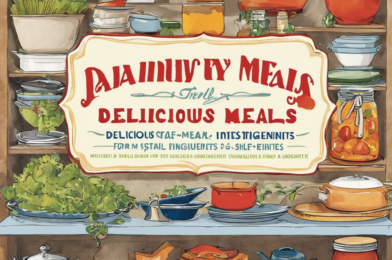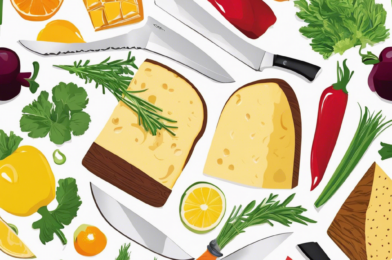Struggling to get your family to eat their veggies? You’re not alone! Many parents know the challenge of trying to incorporate more vegetables into their family’s diet, especially when picky eaters are involved. But fear not – there are plenty of creative and delicious ways to sneak veggies into your meals without anyone noticing. And the best part? These recipes are so tasty that even the pickiest of eaters will be asking for seconds!
First up on our list of veggie-packed recipes is a classic: the hidden veggie sauce. This versatile sauce can be made with any combination of pureed or finely chopped vegetables, such as carrots, zucchini, spinach, or butternut squash. Simply sneak a few extra veggies into your next tomato sauce or Mac and cheese dish, and your family will be none the wiser. The sweet flavor of the tomatoes and cheese will mask any vegetable taste, leaving you with a nutritious and delicious meal.
Another great way to sneak veggies into your family’s diet is to incorporate them into favorite side dishes. For example, try making cauliflower rice or mashed potatoes with a blend of cauliflower and potatoes. You can also add pureed butternut squash or carrots to your next batch of biscuits or quick bread for a subtle vegetable boost. These subtle additions are a great way to introduce more vegetables without overwhelming picky eaters.
Let’s talk about smoothies and desserts! Smoothies are an excellent way to pack in a variety of nutrients, and you can easily add a handful of spinach or kale without affecting the taste. As for desserts, why not try zucchini bread or beetroot chocolate brownies? These treats are a fun and unexpected way to include veggies, and they’re so delicious that no one will suspect a thing! It’s all about getting creative and thinking outside the box.
Another tip is to experiment with different preparations and presentations. Roasting vegetables brings out their natural sweetness and can make them more appealing to picky eaters. You can also try serving veggies in fun, bite-sized forms, like baked broccoli or cauliflower tots, zucchini fries, or mini bell pepper boats filled with a tasty stuffing. These creative presentations can make vegetables more approachable and enticing.
Involving your picky eaters in the kitchen is another great strategy. When kids help with meal preparation, they often become more interested in trying new foods. Encourage them to join you in the kitchen and let them choose a veggie-packed recipe to make together. They can help with washing, chopping, mixing, and even creating fun shapes or designs with the veggies. By engaging them in the process, you might just spark their curiosity and willingness to give vegetables a chance.
Presentation is key! Arranging veggies in fun and colorful ways on the plate can make a world of difference. Create veggie art or funny faces, cut them into interesting shapes, or serve them with a tasty dip. When veggies look inviting and exciting, picky eaters may be more inclined to give them a try. It’s all about making healthy food fun and appealing.
Lastly, don’t be afraid to experiment with different vegetables and preparations. If your family doesn’t care for steamed broccoli, try roasting it with a sprinkle of cheese or adding it to a stir-fry. Keep offering a variety of veggies in different ways, and you’re sure to find some winners that even the pickiest eaters will enjoy. Remember, it’s all about making vegetables accessible and delicious!









